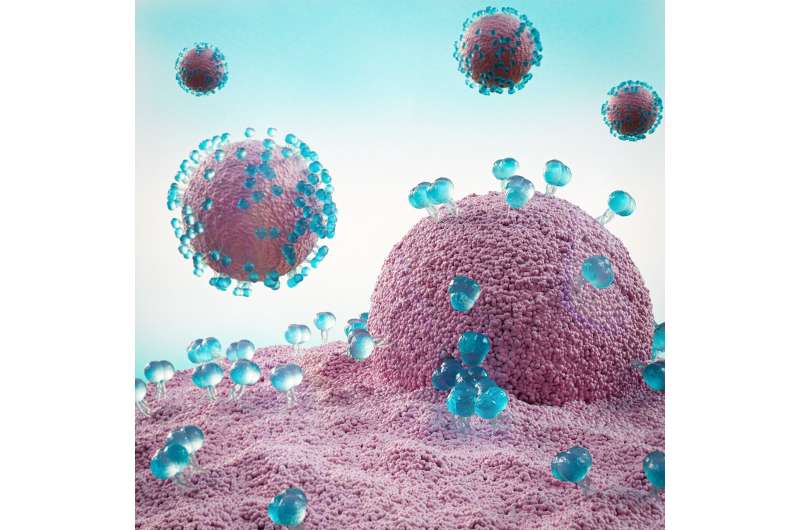New model highlights importance of virus size in SARS-CoV-2 replication

As the world recovers from the economic and social impacts of COVID-19, researchers like Mattia Bacca continue to study SARS-CoV-2 and related viruses to be better prepared for future pandemics.
Dr. Bacca, an assistant professor at the University of British Columbia, used his particular expertise—micromechanics, the study of extremely tiny structures—to develop a simple mechanical model of how viruses replicate inside a cell.
In a paper published recently in the Journal of The Royal Society Interface, Dr. Bacca proposes that the mechanism by which enveloped viruses like the coronavirus (as well as HIV, influenza and hepatitis) replicate tends to favor a certain size of virus particles.
Dr. Bacca explains, "When a virus infiltrates a cell, it forms many copies of itself inside the cell. These virus copies assemble into several nuclei, around which the cell membrane starts to wrap itself, forming buds that stick out from the surface of the cell. Eventually the buds are expelled, becoming new virus progeny, ready to infect other cells."
"Spike proteins scattered across the cell surface play a key role in this process. They bend the cell membrane into a rounded shape that promotes the formation of the buds. This curvature ultimately controls the optimal size of the virus. Virus particles that are either too small or too large, compared to the optimum, will have a much higher energetic barrier to replication, and thus will take much longer to replicate. In some cases, they will not replicate at all."
The "Goldilocks zone" seems to be 60nm to 100nm in diameter for most viruses, Dr. Bacca added.
Dr. Bacca adds that his theory could also partly explain what makes certain viruses more infectious: "A virus could be highly infectious because it is very efficient in replicating. Since virus replication commonly takes 10 minutes, while infection takes less than a minute, replication efficiency is more than 10 times more impactful than infection efficiency, across the life cycle of a virus."
Following this work, Dr. Bacca is continuing the study of cell membranes and viruses to better understand virus evolution and to develop new therapeutics against cancer, together with Dr. Pieter Cullis (UBC), Dr. Mauricio Ponga (UBC) and Dr. Huajian Gao (Nanyang Technological University, Singapore).
More information: Mattia Bacca, Mechanics of diffusion-mediated budding and implications for virus replication and infection, Journal of The Royal Society Interface (2022). DOI: 10.1098/rsif.2022.0525
Journal information: Journal of the Royal Society Interface
Provided by University of British Columbia




















